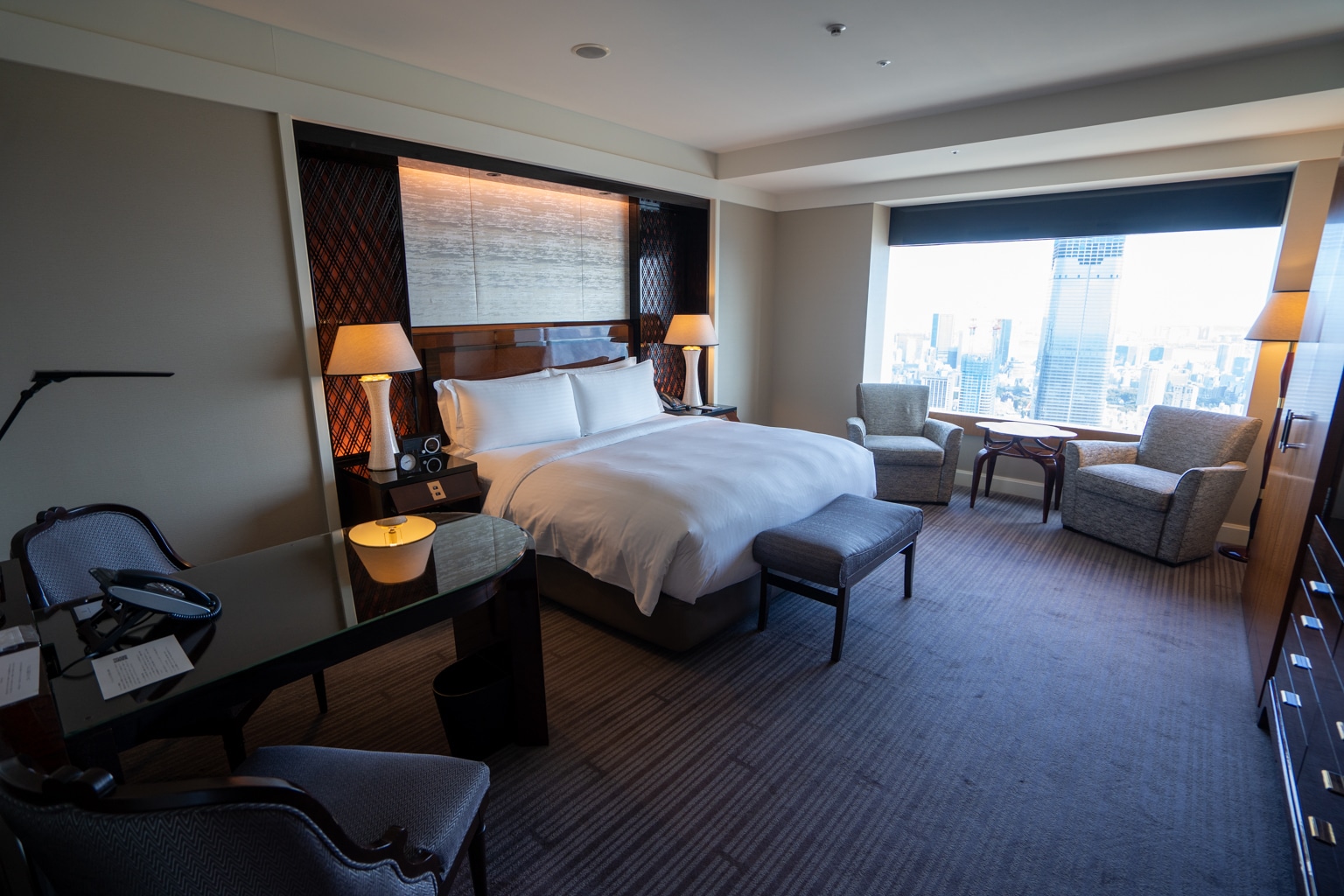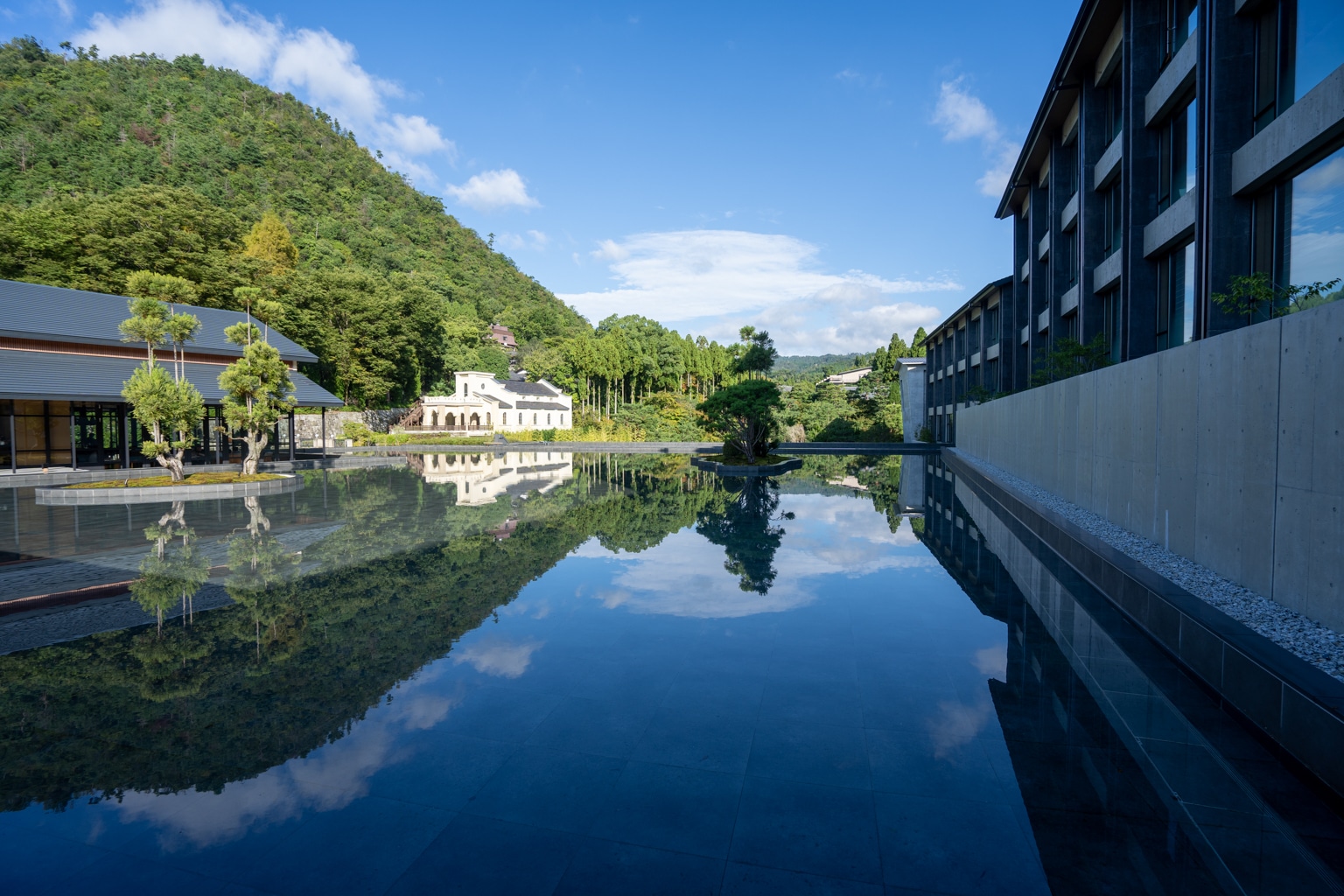Japan appears to be on many travellers’ minds these days, and I now understand the hype. Having come back from spending just over two weeks there, I feel like we only skimmed the surface, and I’m wondering when we can go back already.
Planning our trip to Japan was probably the most difficult trips I’ve had to plan. Aside from travelling with five other families, there were several factors that played into this.
There was so much we wanted to see and do but we had to narrow it down to something realistic. Accommodation options were bountiful, but finding one in an ideal location that could accommodate our family of five took some researching. Lastly, moving from one location to the next most efficiently took planning.
In this article, I’ll share some tips I think will better prepare you and your family for Japan.
Preparing for Your Arrival
There are a number of items you’ll want to consider as you prepare for your entry into Japan.
Arrival Forms
At the time of writing, Japan still has mandatory arrival forms. Recently, Japan announced that they will be lifting all COVID-19 border measures on May 8, 2023. For the most up to date information and setting up an account to complete your arrival forms, please see the Visit Japan website.
If you are travelling prior to May 8, 2023, you’ll likely still need complete these forms, and it’s best to do them prior to arrival. This will help speed up your processing through customs and immigration.
At the end of completing the forms, you should have an Immigration QR Code, Customs Declaration QR code, and Pre-registration for Quarantine Procedures form completed for each traveller. Just in case you can’t access wifi on arrival, be sure to screenshot all your forms.
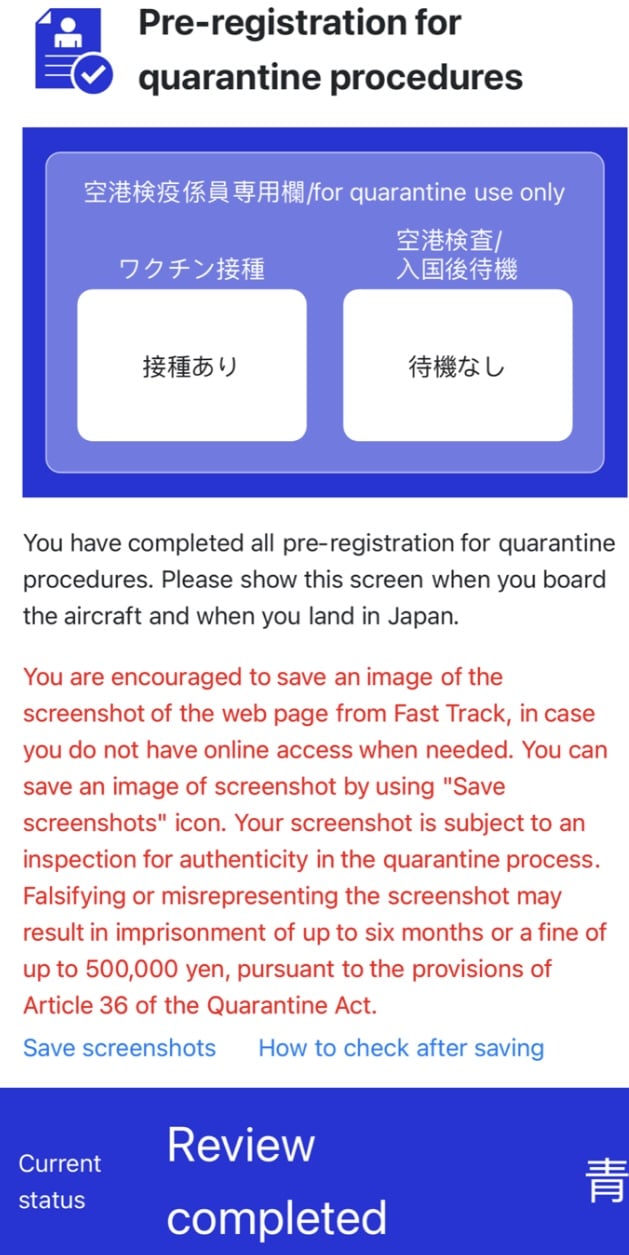
Internet Access
There are many options for accessing data when in Japan. The easiest is to use an eSIM card.
It’s best to load and activate your eSIM before arrival. I had friends successfully use Ubigi and Airalo without many issues on this trip. GoogleFi worked great for me.
I like to make sure my GoogleFi is on prior to my flight departing Canada, to make sure I have connectivity on arrival.

JR Pass
If you plan on getting a Japan Rail Pass, purchase it before your arrival in Japan, as it will cost more having to it from the JR Pass office once in Japan. Children under age 6 are free, and those aged 6 through 11 receive a 50% discount.
Many foreign travellers going to Japan pick up a JR pass, but it’s not meant for everyone. You’ll want to carefully research what the JR Pass covers, the process of getting one, and whether it’s worthwhile to use during your time in Japan.

Suica Pass
The Suica Pass is a prepaid, rechargeable smart card, which can be used to tap on and off train and subway lines, and deducts the fare with each tap.
It is convenient to have as it allows you to ride most of Japan’s public transport system without needing to make a purchase at a ticket vending machine with each ride.

Each traveller needs their own card. Kids up to the age of 6 on March 31 of each year ride for free. Kids up to the age of 12 on March 31 of each year are charged a child fee on public transportation.
You can obtain a digital version of the card on your Apple Wallet prior to arrival and pre-load it, simply by opening the Wallet app and searching for “Suica”. Unfortunately, the mobile version for Android users only works for those who purchased their smartphone in Japan.
For kids under 12, you’ll still need to obtain a physical card in-person from a JR ticket office.
Suica passes can also be used to pay for things at a variety of convenience stores and shops all around Japan. Loading your Suica with an HSBC World Elite Mastercard will code as travel, whereas with the Amex US Green Card it will code as transit, which is great for maximizing those multipliers.
Outlet Adaptors
Japan uses the same two-pronged outlet sockets as Canada and the US, so you likely will not need a plug adaptor unless you have a device with a three-pronged plug.
The outlet voltage in Japan is 100V, whereas in Canada the voltage is 120V, so for certain devices, you may still need a voltage converter and/or voltage adapter.
Useful Apps
You’ll want to download a few apps before your trip. Many people in Japan are not fluent in English and depending on where you are, many signs and menus may only be in Japanese.
A good translator app is recommended. We used Google Translate, but some travellers have also recommended DeepL.

Google Maps will be your best friend when it comes to transportation, but some travellers have also recommend JapanTravel.
Dining reservations can be done via the app or site Tabelog, but to be honest, I found it easiest to just ask our hotel staff to make a call to secure dining reservations for us.
What to Do on Arrival
Upon landing in Japan and going through customs and immigration, there are a few things you’ll want to complete as soon as possible to set yourself up for success.
Use a luggage delivery service
If you’d prefer not to lug your luggage on the trains to your hotel, consider a luggage delivery service.
For about $20 per luggage, this may make sense if you need to catch a few connecting trains to your destination or if you don’t have a reserved seat on a train.
There are several counters at the airport arrivals terminal that offer this service. Head to the counter, complete the paperwork and the company will handle the rest.

Keep in mind that depending on your destination and the time of luggage drop-off, it may take a one or two days before you receive your luggage, so pack any essentials with you.
Exchange money
Unlike some countries that readily accept credit cards, Japan is one country you’ll still need to carry some cash. Some people like to exchange money before leaving their country.
I generally like to exchange mine upon arrival using my Wealthsimple Cash Card. You can obtain one through signing up for Wealthsimple first, then setting up a Cash account. After that, you can request their Wealthsimple Mastercard, a prepaid card that withdraws funds directly from your Cash account.
What I like about the Wealthsimple Cash Card the most is that you can use the card to withdraw funds from almost any ATM worldwide, exchanged at almost the spot rate, which ends up cheaper than exchanging currency at a bank back at home.
ATMs at 7-Elevens in Japan generally don’t charge any additional fees as long as you select to get charged in the local currency.
Wise is another great platform to use, where you can exchange currencies within the app and then withdraw it from an ATM once you arrive at your destination with its Wise Card. The only drawback is that there is monthly withdrawal limit of $350 (CAD).
Pick up JR Passes and Suica Passes for the kids
If you purchased a JR Pass and need to redeem the voucher for it, you can pick it up before you leave the airport at the JR Travel Service Centers at the major international airports (Tokyo Narita, Tokyo Haneda, and Osaka Kansai).

You can also pick up your pass at major train stations like Tokyo Station, Kyoto Station, or Osaka Station, just to name a few.
Be warned that the queues can be long at the Service Centers. It’s best to have one person line up while the rest go grab a bite.
While you’re picking up your JR Passes, don’t forget to pick up the Suica Passes for the kids as well (and for adults if you aren’t able to get the mobile Suica).
Don’t forget to leave the person waiting in line with everyone’s passports, as they will need them for both types of passes.
Transportation
Generally speaking, most of the time, you will be using Japan’s public transport system of trains and buses to get to most destinations within Japan.
At first glance, it looks a bit chaotic, with all the different train systems and stations. After the first few times getting on and off the trains, you’ll get the hang of it.
Do factor in some extra time though when planning your routes as a lack of English in some busy stations may result in it taking you longer to find your way, especially with kids in tow.

Navigation
Google Maps was my best friend when it came to navigating Japan. It will give you all the different options for getting from your location to your destination.
You can search based on the time of departure and also see what the options are at a later point in time. It gives you information on how busy the train will be, the station platform to go on, which train car to enter, and which exit to take once you get off the train.

Trains in Japan run very much on time, so if you are running late, it’s better to catch the next one. Although most stations don’t require travelling up or down too many flights of stairs or escalators, only the major stations have elevator access.
Major stations can be very busy and crowded. If you’re bringing a stroller, bring a compact travel one.
Getting around with Uber
Sometimes catching an Uber is more convenient to reduce travel time. We found rates to be very high in Tokyo and Osaka though, but quite reasonable within Kyoto. With things being quite spread out in Kyoto, we ended up using Uber more than public transit during our time there.
Even though the Uber app says a vehicle can only accommodate four passengers, in many cases, if MK Taxi is the Uber company picking you up in Kyoto, their vehicles can accommodate up to six passengers. Check the vehicle type once your ride is confirmed.
If you happen to get a car that can only accommodate four, which only happened once or twice for us, just cancel the vehicle and order another.

It’s also better to call the taxi or Uber on your own. When the hotel called one for us, an extra charge was added to our fare.
If you plan on renting a car, be aware that an International Driving Permit is required to do so in Japan. This can be obtained from a CAA office but must be done prior to your trip.
Shinkansen high-speed trains
The Shinkansen high-speed train system is one of the best ways to travel between Japan’s major cities.
Reserve seats on the train when you can. I was told that seat reservations weren’t necessary, but when we visited, the trains were often packed.
There are sometimes single middle seats available, but this doesn’t work well when you’re travelling with young kids who need to be by your side or when the travel time will be 2–3 hours.
Given how courteous Japanese people are, you’ll likely run into a local who will offer up their seat so that you can be seated with your children, but of course this isn’t guaranteed.
The JR Pass comes with free seat selection, which is a great perk. However, the drawback with the pass is that you won’t be able to ride the fastest Nozomi trains, which often shave 25–30 minutes off a trip between Tokyo to Kyoto…

…and run a lot more frequently than the Hikari trains covered by the JR Pass.
If you prefer to ride the Nozomi train and are able to plan your travel time at least three days beforehand, consider buying a Hayatoku-Family NOZOMI ticket, which gives a bit of a discount and allows for seat reservations for those travelling as a party of two or more.
There isn’t a lot of space for excessive baggage on the Nozomi trains, but each seat offers enough leg room to place up to a medium sized luggage in front of you.
There were also baggage racks on the two sides of the train above the seats where backpacks and carry-on luggages could fit. To save the hassle of moving larger luggage around, I once again recommend using a luggage transport service.
Although it’s frowned upon to eat on regular trains and subways, even for kids, it’s acceptable to do so on the Shinkansen. Each seat has a tray and cup holder, and there is vendor trolley that comes by selling snacks and drinks.
Even better, bring your own food. Pick up some snacks or bento boxes at the station before boarding.

If you’re hoping to catch a glimpse of Mount Fuji, choose seats C or D in the Green car or seats D or E in the ordinary cars.
Car seats and carriers for children
The use of car seats is optional in taxis and not required on public transportation. For long distance trips, it may still be advisable to request one from a hired transport service.
If you are travelling with a toddler, I’d recommend a carrier in addition to a travel or compact stroller. Although most areas of Japan have nicely paved walkways where strollers can be used without any issues, certain attractions or temples, such as Arashiyama Monkey Park or Fushimi Inari shrine in Kyoto, will require going up many stairs.
In these situations, you may find a baby or toddler carrier more useful.

Accommodations
Where to stay in Japan is a hard one to answer, as it’ll depend on what you want to see and do. Map out your itinerary and see where it makes most sense to stay. To be honest, you can’t really go wrong with any location, as long as there is a train station nearby.
Finding accommodations that can fit a family of four or more can be challenging, especially in Asia. Thankfully, there is a great family-friendly apartment hotel chain in Japan, Mimaru, which caters to family travel and can accommodate up to 10 guests in their hotel rooms and suites, depending on the property.
Mimaru has locations in Tokyo, Kyoto, and Osaka. We had a pleasant experience at the Mimaru Tokyo Ginza East during our time in Tokyo.

For those who prefer to stay with Marriott or perhaps a Hilton or Hyatt to take advantage of elite benefits, not all hope is lost.
If you do a search on each hotel brand’s website, you’ll often find that searching for two guests results in a plethora of options…
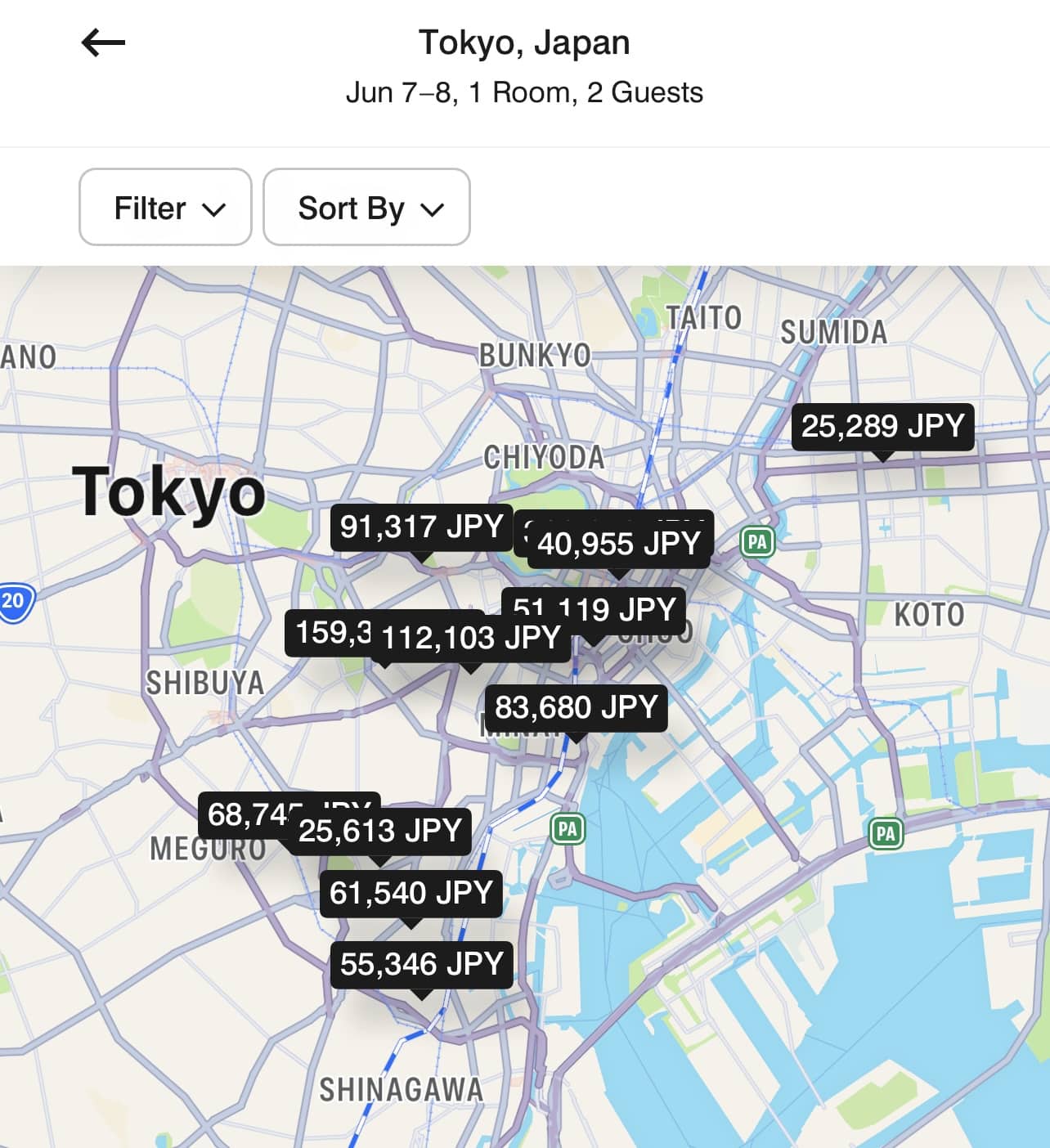
…but once you add two or more kids, the results dwindle to a handful or less, even if there are rooms with two double beds.

Marriott’s search engine in particular often treats children as adults, meaning a search for two adults and two children becomes a search for four guests.
Many hotels in Japan cannot accommodate four adults in a room, but children are often an exception, depending on their age. Some properties consider children to be those aged 6 and under, while others up to the age of 12. Beyond that, for most properties, minors are treated as adults.
There’s no way of knowing unless you reach out to the property directly either by phone or email. Prior to our trip, I made several of these inquiries and was pleasantly surprised with the responses I received.
Most properties will allow an additional 1–3 children in the room, depending on the age of the children and the room type. Some properties will charge an extra person fee, which, for me, is still preferred over having to pay for an extra room. Others will charge for an extra rollaway bed, but this may be optional.
If your children are too old to still be considered children by Japan’s standards, you may still want to contact the hotel directly to find out their options for connecting rooms, as many hotels I contacted did offer this option as well.
Here are some examples from my own searches:
- The Ritz Carlton Kyoto: Up to 2 adults and 2 children for no additional fees in a Deluxe room or above category, many connecting room options
- Hotel The Mitsui Kyoto: Up to 2 adults and 2 children in the Deluxe room with 2 double beds, and up to 3 children in a Premier room with 2 double beds, or most higher room and suite categories; an extra bed fee is ¥15,180 including tax and service charge. We were upgraded to their Nijo Suite during our visit, which was amazing!


- The Chapter Kyoto: Up to 2 adults and 2 children in any room type, but for 3 children, which requires an extra bed, it needs to be at least a Superior Twin with shower; connecting rooms are available
- JW Marriott Nara: Up to 2 adults and 2 children in a Guest Room, but for 3 children there is an extra bed fee of ¥12,320 including tax and service charge
- Hyatt Regency Osaka: Up to 2 adults and 2 children in any of their King or Twin bed rooms, and up to 3 children in their suites with no extra bed fees; connecting rooms are available
If you are moving from one hotel to another, like we did, strongly consider using a luggage delivery service.
If you are unsure which to use, just ask the hotel for assistance. They generally have companies that they work with already and will help you complete all the forms for them, which is very helpful, since they tend to be in Japanese.
Be sure to check the luggage pick-up times, as you may need to pack up by a certain time to ensure your luggage is delivered on time to your next destination.
Amusement Parks & Attractions
Amusement parks are very popular in Japan, so buying tickets beforehand is a a good idea, especially if you are going during high season. I’ll have a separate article on Tokyo DisneySea and Universal Japan coming out soon.
Popular attractions or tours should also be booked early. Here are some activities we did that I would recommend pre-booking:
- Tea Ceremony and Kimono experience in Kyoto, a family experience for those aged 6 and older
- Kyoto Samurai Experience, which takes place in an authentic samurai house
- Sumo Experience, where you can enjoy a meal while watching and participating in sumo wrestling hosted by retired sumo wrestlers

- teamLab Planets, an artistic, immersive experience for the family
There are many temples and castles in Japan. For all the ones we visited, we had no issues buying tickets on arrival.
For popular temples and attractions, like the Fushimi Inari Shrine or Arashyama Bamboo Forest, I would recommend visiting them as early as possible in the morning or near sunset to avoid the crowds.
Sometimes you just can’t avoid the crowds, like in Nishiki Market in Kyoto or Dotonbori in Osaka. Make sure you hold on tight to little hands and have a tracker on your kid like an Apple Tag or Tile.
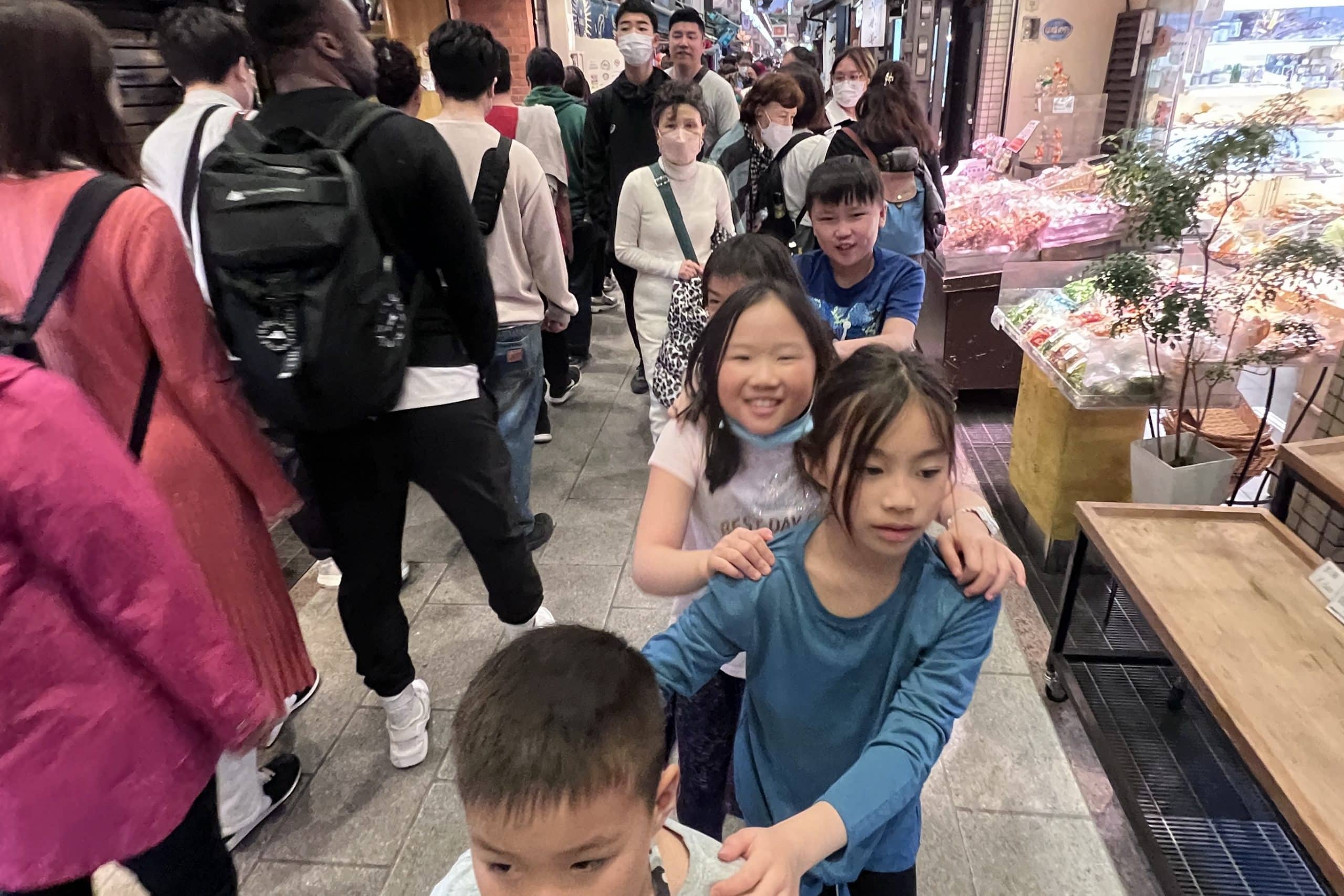
This was also one trip where I didn’t have to pack a bunch of snacks everyday. There are so many places to pick up snacks en route that worrying about hungry kids wasn’t an issue. The kids had a fun time trying new foods too.
The only time I would pack more snacks is if you’re heading to the amusement parks, where lineups to buy food can be quite long.
Shopping
Japan is one destination where you can literally shop till you drop. Normally, there is an 8% sales tax added to all purchases. As a foreigner though, you are eligible for a tax refund at licensed stores if you spend ¥5,000 at the store or mall on a single day.
Be sure to bring a passport with you when shopping, because many stores or malls will process the tax refund on the spot.
If you don’t know where to start, some popular Japanese stores to visit include MEGA Don Quijote, Loft, Muji, Daimaru, and Uniqlo. In Tokyo, there is a Pokemon store which was hit for the kids. For the ladies, Japanese branded cosmetics like SKII and Shiseido are cheaper to buy in Japan, especially at the airports.
Mix in a kid-friendly or fun activity with the shopping to keep things entertaining for the kids. There are also plenty of 7-Elevens to pop in for some strawberry and whipped cream sandwiches, mochi ice cream, or other fun snacks should the kids need some encouragement (ahem, bribery). 😉

Conclusion
Japan is a very fun, safe, and family-friendly destination. Planning your first trip here with kids can be daunting, but it’ll be well worth it. A little research and planning will go a long way.
When looking for an accommodation, contact hotels directly to see if they can accommodate your family. Before you arrive, see if a train pass makes sense with your travel plans. Pre-book popular attractions. Familiarize yourself with the arrival process, download some apps, purchase an eSim, and be ready to use cash.
Don’t be intimated by the transportation system, as it’s not as bad as it looks, and make use of luggage transport services to minimize the stress of carrying your luggage from one destination to the next.
Finally, although there is plenty to see and do, try not to pack your days. Leave some time to take in the culture, the people, and enjoy the delicious food.
After all, in my view, and I’m sure many others would agree, Japan is arguably the place on earth where you can always come back for a second, third, and fourth time, and always find new things to do.















